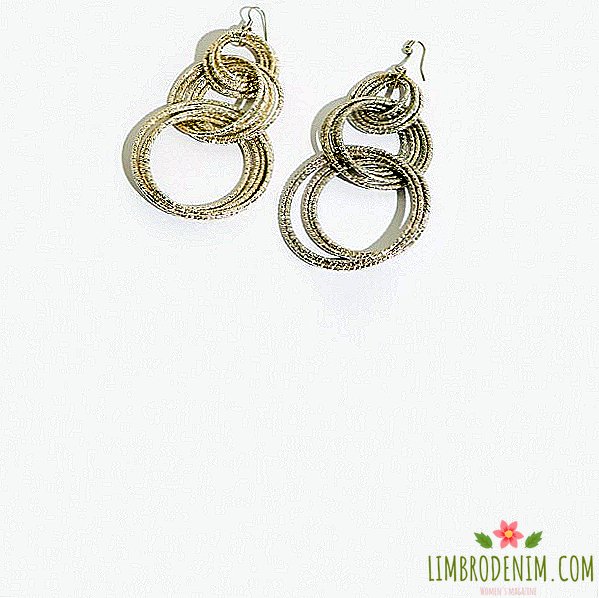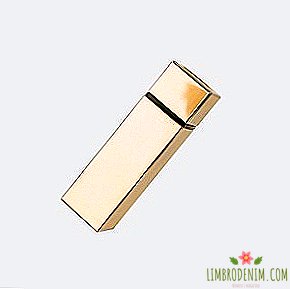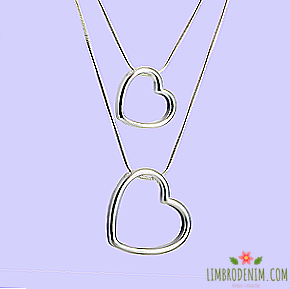To wear or not to wear: Designer Chantal Tomass on underwear and feminism
Chantal Tomass - one of the few grand dame of the fashion industry, who, having half a century of experience, continue to manage the work of the brand from and to. Thomas is 69 years old, but any Millennial envy her diligence and vigor: the next day after the show of a nominal brand in Moscow, which she personally prepared, the designer spent several hours talking to journalists before flying to her native Paris. Chantal Tomass, like the recently deceased Sonia Rykiel, belongs to the second wave of feminist designers, who were brought up on the ideas of the 1960s and remained loyal to them all their lives.

 What lingerie did women wear in the 60s? You then just released the first collection.
What lingerie did women wear in the 60s? You then just released the first collection.
The main trend in my youth was not to wear underwear. Then, in the early 1970s, panties on a high waist came into fashion and women without exception began to wear tights - this was a turning point. Bras while not worn. It was believed that bras are needed only for women with large breasts, and in fashion then was small and neat - Jane Birkin was considered the ideal.
 If the clothes were not worn, why did you decide to wear them?
If the clothes were not worn, why did you decide to wear them?
I started with casual wear, not underwear. By the mid-1970s, I was fascinated by the old fashion of the 18th and 19th centuries — I especially liked corsets. Then I thought up to create a modern version of a corset made of ordinary fabrics, for example, wool in a tartan cell, which could be worn not under clothes, but on top of it - with combination dresses or pullovers, for example. By the way, at that time I did not know how to create underwear: as I said, my contemporaries preferred to do without it, and the fashion for lace had faded away in the 30s. But for some reason I was inspired by just such models, and before the next show I found a small producer who could make them for me. At the same time, they were sewn not from linen fabrics, but ordinary ones.
On that show, I showed quite provocative sets for that time: for example, a combination dress, from under which a bra was peeking, or a skirt with a slit, in which garters for stockings were visible. My generation has never seen anything like it before, except in the wardrobe of their mothers. It was a success, and after I started working with underwear thoroughly. As a result, two minutes were taken from the half-hour show to demonstrate the underwear models, but all the journalists took pictures of them - and these pictures diverged around the world. It was a shame, I even wanted to quit the case. But it so happened that with the company that helped me make the prêt-à-porter line, we stopped cooperating, and I completely switched to creating linen.
 The majority believes that the concept of "underwear as clothing" was invented by Jean-Paul Gautier. And it turns out that in fact you started this story much earlier.
The majority believes that the concept of "underwear as clothing" was invented by Jean-Paul Gautier. And it turns out that in fact you started this story much earlier.
I promoted this idea ten years before he began to release his corsets to the podium.
 In the 1970s, you were the first designer who showed underwear on the catwalk - now shows like the ones that make Victoria's Secret thunder to the whole world.
In the 1970s, you were the first designer who showed underwear on the catwalk - now shows like the ones that make Victoria's Secret thunder to the whole world.
I worked with Victoria's Secret three times. When they first started making their defiles, I was asked to make several models specifically for the show. We were familiar with the director of the company, moreover, they say that he created the first store of the brand in the image and likeness of my store in Paris. I do not know how true this is. Now Victoria's Secret is a huge business. By the way, before, when the French came to New York, the first thing they went to was Victoria's Secret. For example, they have a Pink sports line - sometimes I buy something there for my granddaughter.
 In the 1990s, the Japanese company World gained control over the brand, and it cost you a lot of effort to regain the rights to it. Sorry about this collaboration?
In the 1990s, the Japanese company World gained control over the brand, and it cost you a lot of effort to regain the rights to it. Sorry about this collaboration?
No, I only regret that everything is so sadly over. We have been productively cooperating for ten years: I had the means to open my own shop, showroom. It was a period when lingerie was of little interest to me and I focused on the production of clothing. Everything went wrong, because the company took the leadership position of a new person: because of the fundamental difference between languages and mentalities, I could not explain to the Japanese that I would not work with him. Perhaps the decisive role in the whole story was played by a lawyer who turned something up, and I had to give up the company. It was unpleasant, but it was also an experience.
 How do the trends in the world of linen? Do they depend on common fashion trends?
How do the trends in the world of linen? Do they depend on common fashion trends?
I don’t think that there is a connection between them: the way women’s clothes influence the way their underwear looks. For example, now all the polls are carried away by sports, respectively, models of linen, too, have become more simple, sports. There are, of course, trends that follow the modern standards of beauty. For example, some time ago it was fashionable to have a voluminous chest and everyone wore push-ups, and now, as in the 1970s, women, on the contrary, try not to emphasize the chest.
 Why is aggressive pushap gone?
Why is aggressive pushap gone?
I would not say that he finally left - look at Kim Kardashian, after all. It's just that today we have more choices: women don't have to follow some general direction, it all depends on her own style. Much depends on the country: for example, in Asia, women are completely different in their underwear. There, they are more likely to spend money on an expensive bag or some other branded item that can be displayed, and underwear, on the contrary, will choose a modest one.

 In your opinion, for whom do women buy lingerie today: themselves or a partner?
In your opinion, for whom do women buy lingerie today: themselves or a partner?
For myself. Of course, everything depends on the desire of the woman, but in any case, not every evening she undresses in front of someone. I believe that underwear is necessary first of all to give a woman pleasure, so that she feels good, even if nobody sees her in it.
 How then does the fashion for underwear correlate with feminism?
How then does the fashion for underwear correlate with feminism?
Contrary to popular belief, feminism does not imply that a woman should look "ugly" - feminism encourages women to look the way they want. I see feminism primarily as a woman’s freedom, which does not imply any particular style of underwear.
 Do you consider yourself a feminist?
Do you consider yourself a feminist?
Of course. I am for the freedom of women. However, I believe that feminism does not equal the lack of conventional femininity.
 Did you invent such a bold model that you did not dare to translate it into a collection?
Did you invent such a bold model that you did not dare to translate it into a collection?
I offered a lot of extravagant things. But now we live in a world ruled by marketing. From the point of view of design in underwear everything is possible, but the sales department influences me a lot. It happens that I offer an idea, being absolutely sure that my clients will appreciate it, but the marketing department says: "No, this model will not be successful." Brand first of all need sales.
Photo: Press office





